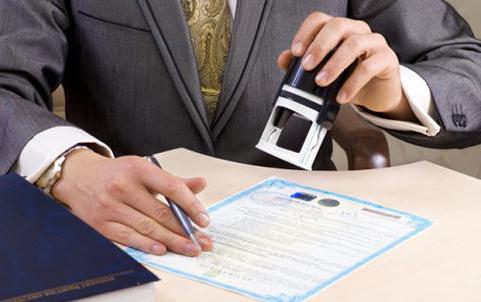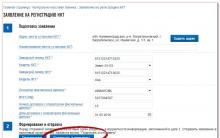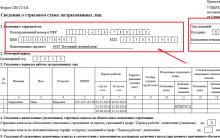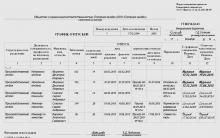Wanting to start a business and engage in entrepreneurial activities, the founder of a small or medium-sized business is faced with the inevitable procedure of documenting his company. Complete and detailed information on how to issue an IP, what papers to prepare and where to submit, is absolutely necessary for correct and timely registration.
According to the legislation of the Russian Federation, individual entrepreneurship (IP) is a type of economic activity, the subject of which is an individual. The staff of his company may consist of one person (founder and head) or include several employees.
Preparatory stage: once again weigh the pros and cons
The decision to register is a responsible step. After its implementation, the entrepreneur will not be able to “reverse”, from this moment his economic activity begins. By this time, the founder of the company must make a list of his economic goals, develop a strategy for future activities, that is, have a real business plan in his hands. In the process of collecting information on how to correctly issue an IP, as well as when studying various legal aspects of all activities, an entrepreneur should pay attention to his responsibility to the state. It consists in the timely filing of reports, the mandatory deduction of certain amounts to the budget and the payment of taxes.
Is it worth setting up a sole proprietorship?
It is no secret that many entrepreneurs may try to run their business in the so-called shadow sector. This means that they do not have any permits to carry out their activities, do not reflect their income in any way and do not pay taxes. The reason is the fear that they will have to collect a package of documents and interact with government agencies, as well as the desire to reduce their costs.
Against the questionable savings, there are several arguments in favor of a legitimate business:
- The entire period during which a person is engaged in entrepreneurial activity is taken into account when calculating the pension experience.
- There is no need to hide from representatives of the law or hide your source of income.
- The procedure for issuing visas to some countries can be simplified.
- The range of opportunities and business contacts is significantly increasing, as many company owners prefer to cooperate only with individual entrepreneurs or legal entities.
- There is an opportunity to carry out non-cash payments.
Thus, we can conclude that any growth and development of the company involves the search for information on how to issue an IP on your own or through special companies.

Why are intermediaries useful?
In the event that a future entrepreneur is well versed in the bureaucratic intricacies of domestic legislation and is able to understand numerous certificates, statements and reports, he may well take care of formalizing his activities.

For the rest, those who have no idea how to issue an IP on their own, the services of intermediary organizations are available.
Their employees will be happy to help you collect the necessary documents, make a seal, open a bank account, and also tell you which government agency you should contact at what stage.
Of course, their work requires appropriate payment.
How to issue an IP: step-by-step instructions in general terms
Knowledge of the procedure for registering individual entrepreneurs and the sequence of actions is necessary for both categories of citizens: both those who are involved in the procedure themselves, and those who have turned to intermediaries.
All actions can be divided into several stages:

To date, there are several options for taxation for individual entrepreneurs. You should decide on the choice of system even before you issue an IP.
The differences between the types are related to the type of activity of the entrepreneur and the amount of his planned profit.
Types of taxation and their characteristics: general system
This is the name of the system that is used by default. That is, it takes effect when no other is selected. Its main condition is the mandatory control of financial transactions, as well as quarterly reporting (it is submitted to the tax inspector).
Before applying for an IP and choosing a general system, you should find out that the entrepreneur will have to deduct 20% of the profit (the difference between income and expenses).
Also on the list of mandatory deductions are:
- Property tax. It is paid when the organization owns any equipment, real estate or machinery.
- Value Added Tax. Its size is 18% of the amount of goods sold or services rendered.
The amount of deductions depends on the size of the business. It is paid every quarter.
Interestingly, an entrepreneur is not required to use a cash register to record transactions made for cash.
Patents and the patent system
Only some entrepreneurs are eligible for taxation under this system. The patent is relevant for companies with a small staff (up to 5 people) and an annual income of up to 60 million rubles.

The use of a cash register is also optional. An entrepreneur does not need to submit reports, he does not need to visit the tax inspector often, he only needs to pay for a patent (valid for one month to a year) and correctly keep records of income in a special book.
Code selection process
Each type of entrepreneurial activity corresponds to a specific individual code, which is indicated in the all-Russian classifier.
This document lists all the main industries and areas: food industry, agriculture, various types of trade and construction.
By indicating the selected code when registering an IP, the entrepreneur determines which taxation system will be applied to him.
Thinking about how best to issue an IP, and choosing a code, you should use only the new classification (compiled in 2014). In addition, the structure of this document is subject to change, so you should keep a close eye on any updates.
What documents are required for registration
The package that is submitted to the tax office should include:
- Passport or its copy if registration is carried out by mail.
- Receipt certifying payment of state duty.
- Copy of identification code.
- An application with a request to open an individual entrepreneur (in the event that the package is sent by mail, the application must be certified by a notary).
- A document notifying which taxation system is chosen by the entrepreneur.
The collected papers are submitted to the branch of the tax office at the place of registration or sent by mail. A day after receipt, the entrepreneur becomes the owner of a registration certificate, a taxpayer identification number and an extract from the unified state register.
After that, information about the individual entrepreneur is automatically sent to the Pension Fund.
Checking account and printing
Even before you draw up an agreement with an individual entrepreneur for the purchase or sale of goods, the provision of services or other types of cooperation, many companies and firms are interested in the possibility of conducting financial transactions by bank transfer.

Often, the lack of an official account with an individual entrepreneur becomes an obstacle to making the most profitable transactions. Therefore, those entrepreneurs who are determined to receive large contracts and orders, immediately after registration, apply to Rosstat for OKVED statistics codes.
A day after submitting a receipt for payment for the services of this state body, copies of the identification code and documents received during registration with the tax office, the entrepreneur receives the necessary codes in two copies, as well as a letter certifying registration. Now you can open a current account, which will need to be notified to the tax authorities and the pension fund.
A seal, like a bank account, is not a mandatory requirement for individual entrepreneurs. However, with this attribute, the status of the company is significantly increased and there is an opportunity for promising cooperation with other organizations.
Also, a seal is needed to fill out work books for employees. If the head of a small firm needs information on how to register an employee as an individual entrepreneur, he should refer to the Labor Code and other administrative documents.
When hiring the first employee, the entrepreneur will have to comply with several mandatory rules and register as an employer (pension and social insurance funds).
In the future, the recruitment procedure will practically not differ from standard employment.

Before planning to expand staff, the small business leader should be aware of the existing restrictions:
- Working on a simplified system, the owner of the company can hire no more than a hundred people.
- For a taxation system that provides for a single tax, the restriction is the same (up to one hundred employees).
- Individual entrepreneurs who have paid for a patent can hire up to five employees.
It should be noted that we are talking about the average number of employees. Therefore, if an entrepreneur has two employees and the shift of each of them is half a working day, then the time sheet indicators will be equal to the productivity of one person.
Knowing the rules and regulations governing the provisions of the law on how to apply for an IP for the work of performers and assistants will help to avoid fines and other penalties.











How to issue a power of attorney to represent the interests of an LLC to an individual?
How to apply for an IP: step by step instructions
Form of power of attorney to receive goods or material assets
The deadline for registering an individual entrepreneur in the tax
Business plan for a law firm: an example with calculations legal support for a business